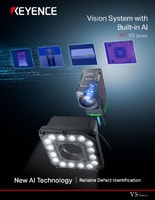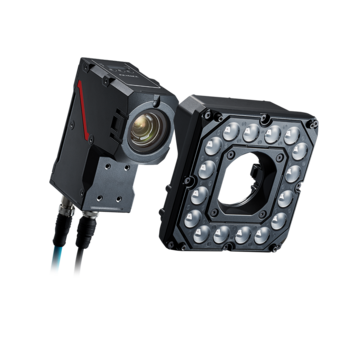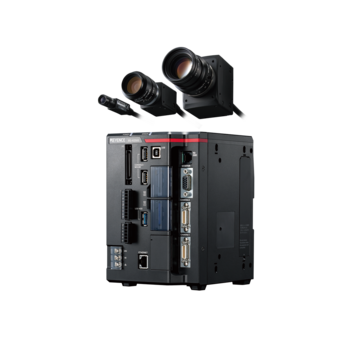Vision Systems
- Vision System with Built-in AI VS series
- Intuitive Vision System CV-X series
- Customizable Vision System XG-X series
- GigE camera and lighting for PC-based machine vision VJ series
- Inline 3D Inspection 3D Vision series
- 3D Vision-Guided Robotics 3D VGR series
- Line Scan Technology Line Scan series
- 2D Vision-Guided Robotics 2D VGR series
- LED Lighting CA-D series
- Lenses (for Machine Vision) CA-L series
- Machine Vision System Database VisionDatabase series
- Automotive
- Automation Equipment/Machine Building
- Electric Vehicles
- Medical Device Manufacturing
- Food/Beverage Packaging
- Semiconductor/Manufacturing Electronics
- Vision-Guided Robotics
- Solar
- Logistics
- Commodities
- Paper Manufacturing
- Machine Tools
- Electronic Device
- Printing
- Mining/Metals
- Fabric/Textile
- Tobacco
- Marine
- Aerospace
Vision Inspection Systems Explained: Smarter, Faster Quality Checks
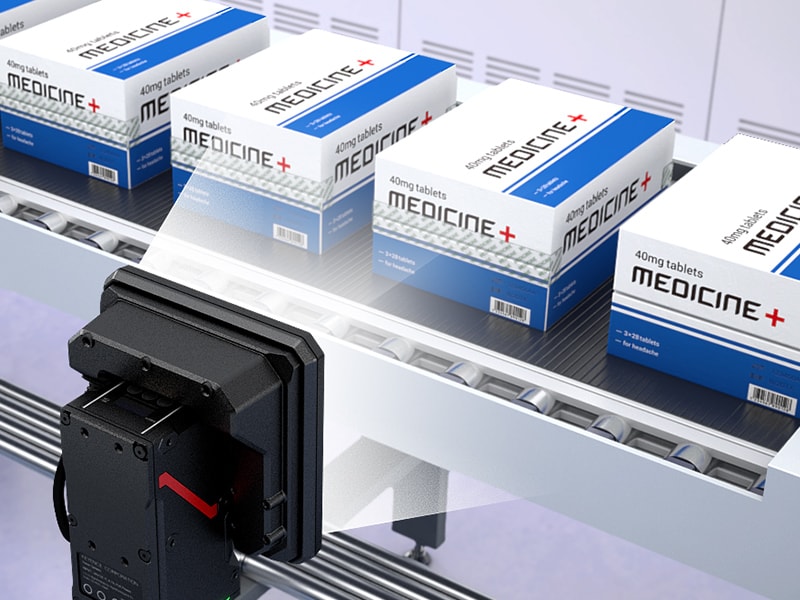
Have you ever opened a drill set and noticed that one of the drill bits was missing, even though you just bought it? This is a case of a product not adequately going through a vision inspection during the manufacturing process. Vision inspection is a way to make sure all the parts are in order and that the product is suitable for sale. Checking that all drill bits are placed in a set is one type of inspection called presence/absence inspection, but there are many other types for different quality control measures.
To conduct these inspections in an efficient way, vision inspection systems are used. A vision inspection system is made up of an industrial camera, lens (or lenses), lighting, and an image processing unit. These systems capture images that inspect products for problems like defects, contaminants, misalignment, incorrect labeling, presence or absence of a part, or mismeasurements. Vision inspection systems are used in virtually every industry: automotive, plastics, food and packaging, pharmaceutical, medical devices, electronics, and more.
Automated vision inspection systems solve these industry-related problems with real-time, camera-based checks that apply the same logic to every unit.
Why Use a Vision Inspection System?
Using vision inspection systems ensures quality control across the board for consumers and manufacturers. Vision inspection systems catch problems early to avoid a defective product moving down the supply chain or being sold to a consumer.
These systems can stop a simple recall of a package missing one bottle or protect a medical patient from ingesting the wrong medicine because of mislabeling. The significance of a vision inspection system’s capabilities with brand reputation, supply chain management, and consumer experience is a huge benefit.
We’re here to provide you with more details.
Reach out today!

How Vision Inspection Systems Work
A vision inspection system uses a combination of industrial cameras, calibrated lenses, and structured lighting to capture detailed images of each product as it moves along the line. For complex surfaces or web-based materials, setups may include 3D or line-scan imaging to ensure full coverage.
Lighting conditions are tuned to bring out specific product features such as edge clarity or surface texture. The camera captures that image, and the software compares it to preset criteria. If there’s a deviation, the system flags it, logs the result, or removes the part automatically. In many environments, this takes place hundreds of times per minute without a drop in accuracy.
Types of Vision Inspection Applications
- Defect and Flaw Detection: Targets visual issues that compromise part integrity, including surface scratches, discoloration, misapplied coatings, or structural inconsistencies. Even minor defects imperceptible to human inspectors can lead to costly downstream failures.
- Presence and Absence Checks: Confirms that each part or package includes what it should. Whether it’s a missing connector on a printed circuit board (PCB) or a food package with five instead of six items, these checks catch errors in real time.
- Product Verification: Verifies that the product’s appearance, label, or identifier matches the actual contents; great for regulated industries like food and pharmaceuticals.
- Barcode and OCR Inspection: Covers both machine-readable and human-readable text. Systems confirm code legibility, positioning, and accuracy even when barcodes are printed at an angle, slightly damaged, or partially obscured.
- Dimensional Measurement: Uses calibrated imaging to verify length, width, height, and orientation. It supports applications that require high repeatability, such as needle inspection in medical manufacturing or part fitment in automotive assembly.
- Positioning and Alignment: Checks confirm that labels, caps, or fasteners are correctly oriented. These applications often address cosmetic issues, but also play a role in functional product assembly and traceability.
Benefits of Vision Inspection
Consistency is one of the most significant advantages automated vision inspection systems provide. Human inspectors vary in speed and accuracy throughout a shift. These machines don’t. Whether it’s the first hour of production or the thousandth unit of the day, vision inspection machines apply the same logic and tolerance with no drift.
Speed is another factor, as machine vision inspection can process high volumes of parts without bottlenecks or the need for sampling.
From a cost perspective, automated inspection reduces rework, scrap, and late-stage failures. It also reduces reliance on manual labor for repetitive tasks, allowing teams to focus on process improvements rather than symptom management.
Vision Inspection System vs. Manual Inspection
Although it is possible to use manual inspections instead of a vision inspection system, there is plenty of discourse about why this isn’t ideal – starting with the fact that modern machines are highly automated and move products quickly down the production line. Adding a vision inspection system to the production line instead of relying on a technician allows the production line to run at speed without compromising inspection quality.
Beyond the pure speed of production being a deterrent for opting for a vision inspection system instead of manual inspections, the technology within vision inspection systems cannot be beaten by humans. Vision inspection systems have evolved significantly since their introduction in the 1960s, when there was barely black-and-white contrast.
Now, vision inspection systems have high resolution, color imaging, multiple lenses, and 3D scanning ability. Vision inspection systems see beyond the naked eye and capture minute contaminants, flaws, defects, and measuring errors that are incomprehensible to the human eye. This intelligent technology makes quality control and product safety more precise.
See the benefits firsthand by signing up for a free trial now.
Free Trial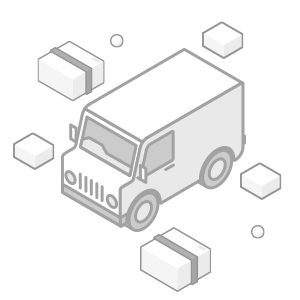
Types of Vision Inspection
There are six types of inspections that vision inspection systems generally perform; in this section, we’ll review what these inspections mean and their applications in different industries.
Defects and Flaw Detection
Inspecting for product defects and flaws is the most popular of all vision system inspections.
For instance, this may target an incorrectly coiled wire or fuse box. With the vision inspection system’s intense visual quality, the system can see defects beyond the surface features of a product. In this case, that could be checking to see if a transparent moisture-proof agent is applied properly or if slight color variations signifying contaminations exist.
Presence/Absence
Presence/absence refers to inspecting the quantity or presence/absence of something on a target.
For example, the vision inspection system may look for the presence/absence of a lid or package inside of a package (like a flavor package in a noodle container). Or, the vision inspection system could ensure six bottles are in a box instead of five.
Product Verification
Product verification uses the vision inspection system to check that a product’s label matches the product. Although this is necessary in all industries – consider how important this is in the food and pharmaceutical industry. The inspection could be the difference between life and death.
Character Inspection and Barcode Reading
Vision inspection systems can be used to read both human-readable and machine-readable codes. Barcodes and human-readable characters must be checked for accuracy.
Ensuring that these characters are validated is necessary for quality control, as it provides accurate expiration dates and guarantees that the model information and code are up to date for manufacturers to trace the product throughout the supply chain.
Measurements/Dimensions
Measurements/dimensions are another category of inspection that the human eye cannot replace. Accurate measurements are necessary for components to be effectively assembled and to last over time with wear and tear. Furthermore, sizes and dimensions can change a consumer's experience with the product; for example, syringe needles are cut at a slant, and if the dimensions are off, a medical patient will experience more pain.
Conventional vision inspection systems can perform measurements similar to lab-based measurement equipment.
Positioning/Alignment
Positioning and alignment are similar to defect and flaw detection inspections, but the vision inspection system inspects a product’s appearance rather than its functionality (in some cases). Examples of positioning/alignment inspections are the front-facing alignment of food or drink labels, visual alignment of barcodes, or the positioning of a lid.
Discover more about this product.
Click here to book your demo.

KEYENCE’s Vision Inspection Solutions
KEYENCE has multiple options for vision inspection systems, vision sensors, and image dimension measurement systems. Each category's options vary depending on repeatability, best use, camera, software, and image quality.
Vision Systems
KEYENCE’s vision systems tackle all vision inspection needs across various industries and products. In this lineup of systems, some systems (XG-X) have line scan cameras for the inspection of large parts that are hard to light and moving webs.
Other systems that are commonly used have 3D camera options. These 3D cameras are ideal for features that can’t be seen with a traditional camera.
These systems feature high-resolution cameras, high-contrast color imaging, and software that is easy to use. Different lighting, camera, and lensing options are available to choose from.
Vision Sensors
Vision sensors are the simplified version of a vision system. KEYENCE’s vision sensors can inspect a wide range of products and can conduct presence/absence, OCR, and defect inspections.
Image Dimension Measurement Systems
Image dimension measurement systems, like the KEYENCE IM Series or metrology vision systems, are a bit different than vision sensors and systems; however, they fall under the category of a vision inspection system because they have a light, lens, camera, and a controller.
The IM Series is optimal for offline measuring inspections. Although the IM Series can’t measure in-line, its processing speed and overall efficiency make up for it. The part is placed on a stage, the technician hits the "measure" button, and the system measures up to 300 features on up to 100 different parts simultaneously.
Key Technology Spotlight: KEYENCE Vision Systems
Different production challenges call for different machine vision inspection solutions. KEYENCE has several solutions. The VS Series, which combines edge-based detection with onboard AI, allows it to handle subtle surface differences without custom scripting. It's frequently deployed in molded plastics and packaging lines where defects aren’t always uniform, and where false positives can slow down production unnecessarily.
When applications require full control over lighting, lenses, and image timing, the XG-X Series offers that customization. Its support for multi-camera arrays and line-scan imaging makes it particularly effective for continuous materials like film, tubing, or sheet metal that can’t be fully captured in one frame.
The CV-X Series bridges advanced inspection with ease of use. Its guided interface simplifies deployment for teams that need 3D checks or robotic positioning but don’t have the time — or headcount — for custom integration. Label placement, fill height, and real-time pass/fail decisions are handled without slowing down the line.
Implementation Guide: Choosing & Deploying Vision Systems
Start by identifying what needs to be measured or verified, as this drives camera selection, lighting type, lens configuration, and software complexity.
Once the hardware is selected, setup involves fine-tuning the lighting, focusing the optics, and defining the image-processing logic. Most modern systems, including those with AI capability, are designed for quick deployment with minimal operator training.
Deployment models vary. Some teams start with a single station, using the vision system as a pilot. Others adopt a full-scale rollout, integrating machine vision inspection across every point in the line.
Real-World Use Cases
In electronics manufacturing, vision inspection machines verify the quality of solder joints, trace routing, and alignment on high-density circuit boards. These systems replace multi-stage manual checks while reducing false passes.
In automotive plants, line-scan cameras detect weld quality and verify panel fitment in real time. Parts that would otherwise require offline inspection are now validated in-line at full speed.
One facility used a vision AI inspection tool to identify cosmetic packaging flaws previously missed by human operators. The system increased detection rates by over 40%, helping the team reduce customer complaints and returns without adding staff.
From Insight to Action: Implementing Vision Inspection
Inspection alone isn’t the goal; the data that comes from automated checks allows manufacturers to monitor variation, trace root causes, and optimize upstream processes. Vision systems give teams the insight to act faster and fix problems at their source.
In many operations, these systems feed data directly into dashboards or alert workflows. Engineers can view defect trends, analyze performance by shift or product type, and make decisions based on real metrics.
Choosing Your Vision Inspection System
Want to learn more about KEYENCE's vision and metrology vision systems? Check out our step-by-step guide to picking your perfect vision inspection system. If you’re ready to talk it through, contact us today, and our expert team will walk you through the process or answer any questions you have.
Contact us to learn more about how our advanced technology can help take your business to the next level.
Contact Us
FAQs
What’s the Difference Between Vision Sensors and Full Vision Systems?
Vision sensors handle basic checks like part presence. Full systems provide more advanced capabilities like measurement, defect classification, and AI processing.
Can 3D and Line-Scan Detect Cylinder Surface Defects?
Yes. Line-scan systems build complete images of rotating parts. 3D vision highlights surface geometry and variations in height or depth.
How Fast Can Vision Inspection Systems Process Parts?
That depends on resolution and complexity, but high-speed systems often inspect hundreds of parts per minute.
How Do Vision Systems Support Traceability and QA?
By logging inspection data, barcode reads, and dimensional checks, they create a digital record for every unit supporting audits, compliance, and process improvement.
We’re here to provide you with more details.
Reach out today!

Related Downloads
Related Products
Industries
- Automotive
- Automation Equipment/Machine Building
- Electric Vehicles
- Medical Device Manufacturing
- Food/Beverage Packaging
- Semiconductor/Manufacturing Electronics
- Vision-Guided Robotics
- Solar
- Logistics
- Commodities
- Paper Manufacturing
- Machine Tools
- Electronic Device
- Printing
- Mining/Metals
- Fabric/Textile
- Tobacco
- Marine
- Aerospace

